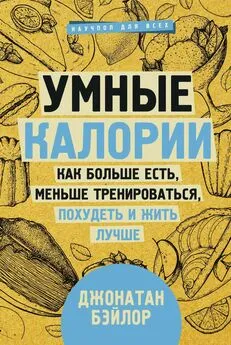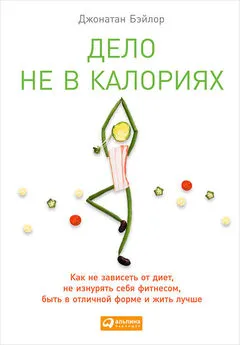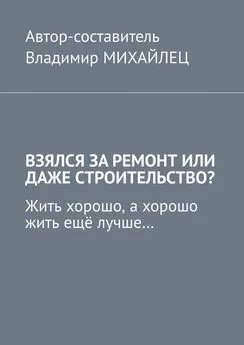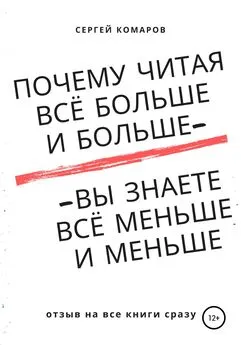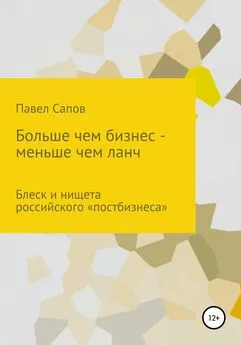Джонатан Бэйлор - Умные калории: как больше есть, меньше тренироваться, похудеть и жить лучше
- Название:Умные калории: как больше есть, меньше тренироваться, похудеть и жить лучше
- Автор:
- Жанр:
- Издательство:АСТ
- Год:2019
- Город:Москва
- ISBN:978-5-17-117609-9
- Рейтинг:
- Избранное:Добавить в избранное
-
Отзывы:
-
Ваша оценка:
Джонатан Бэйлор - Умные калории: как больше есть, меньше тренироваться, похудеть и жить лучше краткое содержание
Научный подход, описанный в этой книге, состоит в том, чтобы признать за организмом его способность саморегуляции и сосредоточиться на качестве тех калорий, которые поступают в организм. Только так мы сможем нормализовать гормональный фон. Ведь долгосрочная потеря веса — это результат оздоровления основных биологических функций.
В жизни и без того много сложностей. Подходите к делу проще. Не отвлекайтесь на мелочи, выбирайте здоровую пищу, отдавайте предпочтение «качественным» физическим упражнениям — сжигайте жир навсегда.
Умные калории: как больше есть, меньше тренироваться, похудеть и жить лучше - читать онлайн бесплатно ознакомительный отрывок
Интервал:
Закладка:
113. Carey, Anne R., and Paul Trap. “Stretching the Truth.” USA Today, January 13, 2011, USA Today Snapshots, 1.
114. St Jeor, ST, BV Howard, TE Prewitt, V Bovee, T Bazzarre, and RH Eckel; Nutrition Committee of the Council on Nutrition, Physical Activity, and Metabolism of the American Heart Association. “Dietary Protein and Weight Reduction: A Statement for Healthcare Professionals from the Nutrition Committee of the Council on Nutrition, Physical Activity, and Metabolism of the American Heart Association.” Circulation 104(15) (2001): 1869–74; PubMed PMID: 11591629.
115. “Status of Articles Offered to the General Public for the Control or Reduction of Blood Cholesterol Levels and for the Prevention and Treatment of Heart and Artery Disease under the Federal Food, Drug, and Cosmetic Act.” Federal Register, December 12, 1959.
116. Gordon, T, WP Castelli, MC Hjortland, WB Kannel, and TR Dawber. “High Density Lipoprotein as a Protective Factor against Coronary Heart Disease: The Framingham Study.” Am J Med 62 (1977): 707–14.
117. Ravnskov, U. “Cholesterol Lowering Trials in Coronary Heart Disease: Frequency of Citation and Outcome.” BMJ 305(6844) (1992 Jul 4): 15–19; erratum in BMJ 305(6852) (1992 Aug 29): 505; PubMed PMID: 1638188; PubMed Central PMCID: PMC1882525.
118. Sacks, FM, GA Bray, VJ Carey, SR Smith, DH Ryan, SD Anton, K McManus, CM Champagne, LM Bishop, N Laranjo, MS Leboff, JC Rood, L de Jonge, FL Greenway, CM Loria, E Obarzanek, and DA Williamson. “Comparison of Weight-Loss Diets with Different Compositions of Fat, Protein, and Carbohydrates.” N Engl J Med 360(9) (2009): 859–73; doi: 10.1056/NEJMoa080 4748; PubMed PMID: 19246357; PubMed Central PMCID: PMC2763382.
119. Castelli, WP, “Cholesterol and Lipids in the Risk of Coronary Artery Disease — The Framingham Heart Study.” Can J Cardiol 4 (1988): 5A–10A; Gordon, T, WP Castelli, MC Hjortland, WB Kannel, and TR Dawber, “High-Density Lipoprotein as a Protective Factor against Coronary Heart Disease — The Framingham Study.” Am J Med 62 (1977): 707–14; Gordon, DJ, JL Probstfield, RJ Garrison, et al., “High-Density Lipoprotein Cholesterol and Cardiovascular Disease — Four Prospective American Studies.” Circulation 79 (1989): 8–15; Sharrett, AR, CM Ballantyne, SA Coady, et al., “Coronary Heart Disease Prediction from Lipoprotein Cholesterol Levels, Triglycerides, Lipoprotein(a), Apolipoproteins A-I and B, and HDL Density Subfractions — The Atherosclerosis Risk in Communities (ARIC) Study.” Circulation 104 (2001): 1108–13.
120. Mozaffarian, D, and DS Ludwig. “Dietary Guidelines in the 21st Century— a Time for Food.” JAMA 304(6) (2010): 681–82; doi: 10.1001/jama.2010. 1116; PubMed PMID: 20699461.
121. Url: http://www.gmabrands.com/publicpolicy/docs/Correspondence.cfm?Doc ID=1123&.
122. Soft Drinks and Nutrition. Washington, DC: National Soft Drink Association, n.d.
123. “The National Institutes of Health: Public Servant or Private Marketer?” Los Angeles Times, http://articles.latimes.com/2004/dec/22/nation/na-nih22 (accessed April 28, 2010).
124. Popkin, Barry. The World Is Fat: The Fads, Trends, Policies, and Products That Are Fattening the Human Race. New York: Avery, 2008.
125. Guyenet, Stephan. “Whole Health Source: By 2606, the US Diet Will Be 100 Percent Sugar.” Whole Health Source. http://wholehealthsource.blogspot.com/2012/02/by-2606-us-diet-will-be-100-percent.html (accessed February 19, 2012).
126. Avena, NM, P Rada, and BG Hoebel. “Evidence for Sugar Addiction: Behavioral and Neurochemical Effects of Intermittent, Excessive Sugar Intake.” Neurosci Biobehav Rev 32(1) (2008): 20–39; Epub May 18, 2007; review; PubMed PMID: 17617461; PubMed Central PMCID: PMC2235907.
127. Colantuoni, C, P Rada, J McCarthy, C Patten, NM Avena, A Chadeayne, and BG Hoebel. “Evidence That Intermittent, Excessive Sugar Intake Causes Endogenous Opioid Dependence.” Obes Res 10(6) (2002): 478–88; PubMed PMID: 12055324.
128. Avena et al. “Evidence for Sugar Addiction.”
129. Hoebel, BG, NM Avena, ME Bocarsly, and P Rada. “Natural Addiction: A Behavioral and Circuit Model Based on Sugar Addiction in Rats.” J Addict Med 3(1) (2009): 33–41; doi: 10.1097/ADM.0b013e31819aa621; PubMed PMID: 21768998.
130. “Tobacco CEO’s Statement to Congress.” UCSF Academic Senate. http:// senate.ucsf.edu/tobacco/executives1994congress.html (accessed July 18, 2010).
131. National Soft Drink Association website. Available at http://www.nsda.org/softdrinks/CSDHealth/Index.html.
132. “Daily Doc: Lorillard, Aug 30, 1978: ‘The Base of Our Business Is the High School Student.’ ”Tobacco.org: Welcome, http://www.tobacco.org/Documents/dd/ddbasebusiness.html (accessed July 18, 2010).
133. Horovitz, B. “McDonald’s Rediscovers Its Future with Kids.” USA Today, April 18, 1997.
134. “Jan. 4, 1954: TIRC Announced.” Tobacco.org: Welcome, http://www.tobacco.org/History/540104frank.html (accessed July 18, 2010).
135. Hays, CL, and DG McNeil Jr. “Putting Africa on Coke’s Map.” New York Times, May 26, 1998, D1.
136. “Jan. 4, 1954: TIRC Announced,” http://archive.tobacco.org/History/ 54010 frank.html.
137. National Soft Drink Association website.
138. Brownell, Kelly, and Katherine Battle Horgen. Food Fight. 1st ed. New York: McGraw-Hill, 2004.
139. Yudkin, John. Sweet and Dangerous. Washington DC: National Health Federation, 1978.
140. Boyd, S, Melvin Konner, Marjorie Shostak, and MD Eaton. The Paleolithic Prescription: A Program of Diet and Exercise and a Design for Living. New York: HarperCollins, 1989.
141. McGuff, Doug. “Body by Science — Especially for Women.” Body by Science, http://www.bodybyscience.net/home.html/?page_id=301 (accessed February 12, 2012).
142. Klein, S, NF Sheard, X PiSunyer, A Daly, J Wylie-Rosett, K Kulkarni, NG Clark; American Diabetes Association; North American Association for the Study of Obesity; American Society for Clinical Nutrition. “Weight Management through Lifestyle Modification for the Prevention and Management of Type 2 Diabetes: Rationale and Strategies: A Statement of the American Diabetes Association, the North American Association for the Study of Obesity, and the American Society for Clinical Nutrition.” Diabetes Care 27(8) (2004): 2067–73; review; PubMed PMID:15277443.
143. Shai, I, D Schwarzfuchs, Y Henkin, DR Shahar, S Witkow, I Greenberg, R Golan, D Fraser, A Bolotin, H Vardi, O Tangi-Rozental, R Zuk-Ramot, B Sarusi, D Brickner, Z Schwartz, E Sheiner, R Marko, E Katorza, J Thiery, GM Fiedler, M Blьher, M Stumvoll, and MJ Stampfer; Dietary Intervention Randomized Controlled Trial (DIRECT) Group. “Weight Loss with a Low-Carbohydrate, Mediterranean, or Low-Fat Diet.” N Engl J Med 359(3) (2008): 229–41; erratum in: N Engl J Med 361(27) (2009): 2681; PubMed PMID: 18635428.
144. Dietary Reference Intakes for Energy, Carbohydrate, Fiber, Fat, Fatty Acids, Cholesterol, Protein, and Amino Acids. Washington, DC: National Academies Press, 2005.
145. Layman, DK, P Clifton, MC Gannon, RM Krauss, and FQ Nuttall. “Protein in Optimal Health: Heart Disease and Type 2 Diabetes.” Am J Clin Nutr 87(5) (2008): 1571S–75S; review; PubMed PMID: 18469290.
146. Eaton, SB, SB Eaton 3rd, and MJ Konner. “Paleolithic Nutrition Revisited: A Twelve-Year Retrospective on Its Nature and Implications.” Eur J Clin Nutr 51(4) (1997): 207–16; review; PubMed PMID: 9104571.
147. Skerrett, PJ, and WC Willett. Eat, Drink, and Be Healthy: The Harvard Medical School Guide to Healthy Eating. New York: Free Press, 2005.
148. Campbell, T. Colin, and Thomas M. Campbell. The China Study: The Most Comprehensive Study of Nutrition Ever Conducted and the Startling Implications for Diet, Weight Loss, and Long-Term Health. Dallas, Tex.: Ben-Bella Books, 2005.
149. Jaminet, Paul, and Shou Jaminet. Perfect Health Diet: Regain Health and Lose Weight by Eating the Way You Were Meant to Eat. New York: Scribner, 2012.
150. Hu, FB, and WC Willard. “Reply to TC Campbell.” Am J Clin Nutr 71 (2000): 850–51 (letter).
151. Wang, Y, MA Crawford, J Chen, J Li, K Ghebremeskel, TC Campbell, W Fan, R Parker, and J Leyton. “Fish Consumption, Blood Docosahexaenoic Acid and Chronic Diseases in Chinese Rural Populations.” Comp Biochem Physiol A Mol Integr Physiol 136(1) (2003): 127–40; review; PubMed PMID: 14527635.
152. Fuhrman, Joel. “What You Need to Know about Vegetarian or Vegan Diets.” DrFuhrman.com, http://www.drfuhrman.com/library/article5.aspx (accessed May 12, 2012).
153. Hu, FB, and WC Willett. “Optimal Diets for Prevention of Coronary Heart Disease.” JAMA 288(20) (2002): 2569–78; review; PubMed PMID: 12444864.
154. Masterjohn, Chris. “The Curious Case of Campbell’s Rats — Does Protein Deficiency Prevent Cancer?” The Weston A. Price Foundation, http://www.westonaprice.org/blogs/2010/09/22/the-curious- case-of-campbells-rats-does-protein-deficiency-prevent-cancer (accessed December 17, 2011).
155. Westerterp-Plantenga, MS, A Nieuwenhuizen, D Tomй, S Soenen, and KR Westerterp. “Dietary Protein, Weight Loss, and Weight Maintenance.” Annu Rev Nutr 29 (2009): 21–41; review; PubMed PMID: 19400750.
156. Hu, FB, JE Manson, and WC Willett. “Types of Dietary Fat and Risk of Coronary Heart Disease: A Critical Review.” J Am Coll Nutr 20(1) (2001): 5–19; review; PubMed PMID: 11293467.
157. Melov, S, MA Tarnopolsky, K Beckman, K Felkey, and A Hubbard. “Resistance Exercise Reverses Aging in Human Skeletal Muscle.” PLoS One 2(5) (2007): e465; PubMed PMID: 17520024; PubMed Central PMCID: PMC1866181.
158. McGuff, Doug, and John R. Little. Body by Science: A Research Based Program to Get the Results You Want in 12 Minutes a Week. New York: McGraw-Hill, 2009.
159. Caulfield, Timothy A. The Cure for Everything: Untangling Twisted Messages about Health, Fitness, and Happiness. Boston: Beacon Press, 2012.
160. Kolata, Gina Bari. Ultimate Fitness: The Quest for Truth about Exercise and Health. New York: Farrar, Straus and Giroux, 2003.
161. Izumiya, Y, T Hopkins, C Morris, K Sato, L Zeng, J Viereck, JA Hamilton, N Ouchi, NK LeBrasseur, and K Walsh. “Fast/Glycolytic Muscle Fiber Growth Reduces Fat Mass and Improves Metabolic Parameters in Obese Mice.” Cell Metab 7(2) (2008): 159–72; PubMed PMID: 18249175.
162. Oliver, J. Eric. Fat Politics: The Real Story behind America’s Obesity Epidemic. New ed. New York: Oxford University Press, 2006.
163. Kolata, Gina Bari. Ultimate Fitness: The Quest for Truth about Exercise and Health. New York: Farrar, Straus and Giroux, 2003.
164. Izumiya, Y, T Hopkins, C Morris, K Sato, L Zeng, J Viereck, JA Hamilton, N Ouchi, NK LeBrasseur, and K Walsh. “Fast/Glycolytic Muscle Fiber Growth Reduces Fat Mass and Improves Metabolic Parameters in Obese Mice.” Cell Metab 7(2) (2008): 159–72; PubMed PMID: 18249175.
165. Carpinelli, RN, and RM Otto. “Strength Training: Single versus Multiple Sets.” Sports Med 26(2) (1998): 73–84; review; PubMed PMID: 9777681.
166. Roig, M, K O’Brien, G Kirk, R Murray, P McKinnon, B Shadgan, and WD Reid. “The Effects of Eccentric versus Concentric Resistance Training on Muscle Strength and Mass in Healthy Adults: A Systematic Review with Meta-Analysis.” Br J Sports Med 43(8) (2009): 556–68; doi: 10.1136/ bjsm.2008.051417; Epub November 3, 2008; review; PubMed PMID: 18981046.
167. Reeves, ND, CN Maganaris, S Longo, and MV Narici. “Differential Adaptations to Eccentric versus Conventional Resistance Training in Older Humans.” Exp Physiol 94(7) (2009): 825–33; Epub April 24, 2009; PubMed PMID: 19395657.
168. Babraj, JA, NB Vollaard, C Keast, FM Guppy, G Cottrell, and JA Timmons. “Extremely Short Duration High Intensity Interval Training Substantially Improves Insulin Action in Young Healthy Males.” BMC Endocr Disord 9 (2009 Jan 28): 3; PubMed PMID: 19175906; PubMed Central PMCID: PMC2640399.
Читать дальшеИнтервал:
Закладка:
